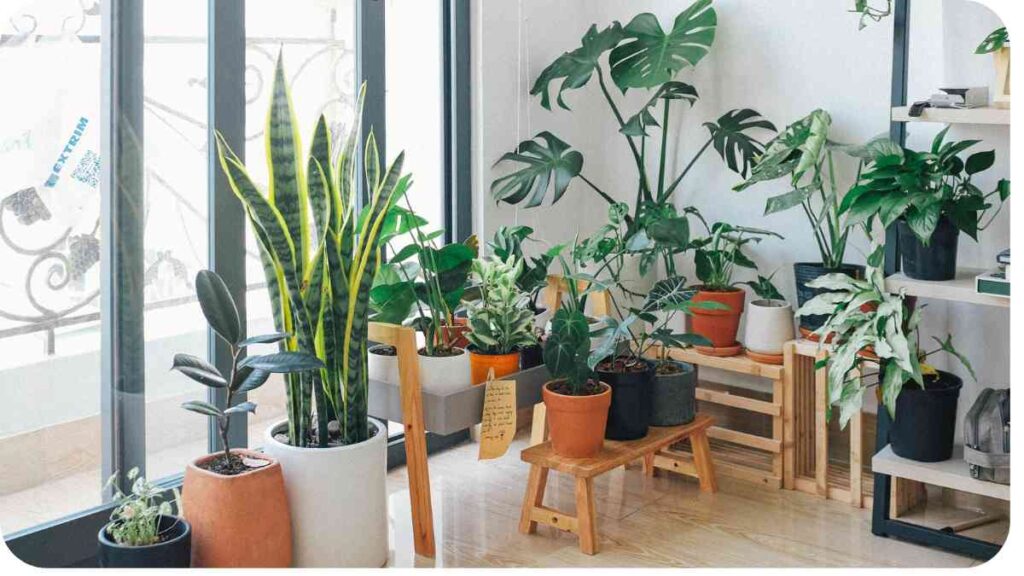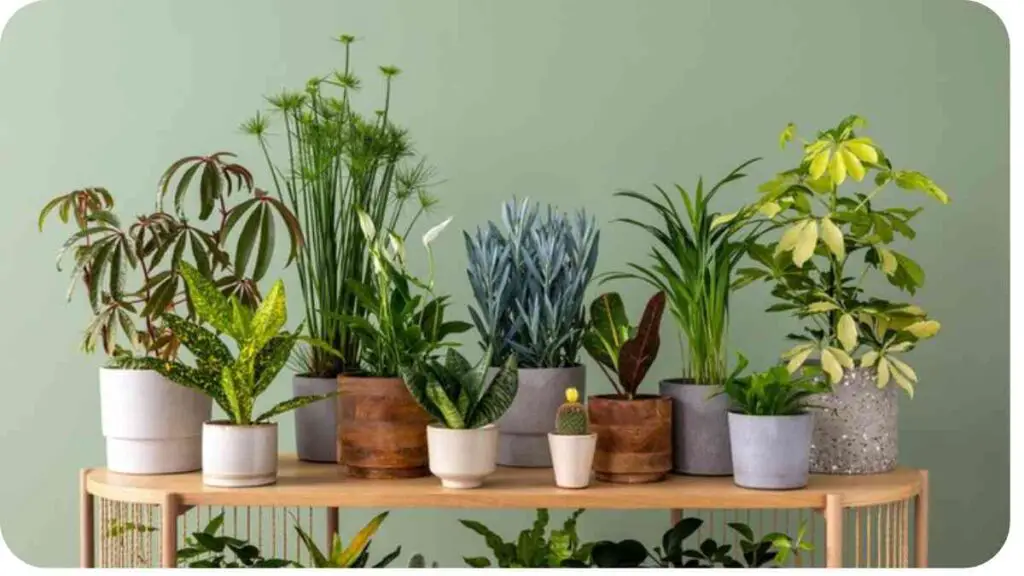Indoor plants not only add aesthetic appeal to our living spaces but also contribute to better air quality and overall well-being. However, many plant enthusiasts wonder: do indoor plants last all year?
In this article, we’ll delve into the factors influencing indoor plant lifespan, the best plants for year-round enjoyment, and essential care tips to ensure your green companions thrive.
| Takeaways |
|---|
| 1. Choose resilient indoor plants for year-round enjoyment. |
| 2. Provide adequate light, water, and temperature to promote plant health. |
| 3. Monitor plants closely for signs of stress or infestations and take prompt action. |
| 4. Adjust care routines seasonally to accommodate changing environmental conditions. |
| 5. Celebrate the growth and resilience of indoor plants, and enjoy the benefits they bring to your home. |
2. Understanding Indoor Plants

Indoor plants encompass a wide variety of species, each with its own unique requirements and characteristics. Understanding the needs of your indoor plants is crucial for their longevity. Let’s take a closer look at some common indoor plants and their lifespans:
Regular soil maintenance is crucial for ensuring the vitality of indoor plants. Replace potting soil periodically to promote optimal growth and prevent issues like root rot, ultimately prolonging the lifespan of your beloved green companions.
| Plant Type | Lifespan (Approx.) |
|---|---|
| Succulents | Several years |
| Ferns | 1-3 years |
| Spider Plants | Indefinite |
| Peace Lilies | Indefinite |
| Snake Plants | Indefinite |
3. Factors Affecting Indoor Plant Lifespan
Several factors can influence the lifespan of indoor plants. By addressing these factors, you can significantly prolong the life of your green companions:
| Factor | Impact on Lifespan |
|---|---|
| Light Exposure | Insufficient light can lead to stunted growth and decline |
| Watering Frequency | Overwatering or underwatering can cause plant stress |
| Temperature and Humidity | Extremes can affect plant health and vigor |
| Pot Size and Soil | Proper drainage and nutrient-rich soil are essential |
| Pest and Disease Control | Regular monitoring and treatment prevent infestations |
4. Best Indoor Plants for Year-Round Enjoyment

While some indoor plants are more finicky than others, several species are known for their resilience and longevity. Here are some top picks for year-round enjoyment:
Guard against root rot to sustain the health of your indoor plants year-round. Discover comprehensive strategies to prevent root rot in houseplants, safeguarding their longevity and ensuring they thrive in their indoor environment with proper care and attention.
| Plant | Lifespan | Characteristics |
|---|---|---|
| Pothos | Indefinite | Low-maintenance, trailing vines |
| ZZ Plant | Indefinite | Tolerant of low light and neglect |
| Rubber Plant | Several years | Bold foliage and air-purifying properties |
| Snake Plant | Indefinite | Thrives in low light and minimal watering |
| Peace Lily | Indefinite | Elegant blooms and air-purifying qualities |
5. Care Tips for Prolonging Indoor Plant Lifespan
To ensure your indoor plants thrive year-round, it’s essential to provide proper care and attention. Here are some tips for prolonging indoor plant lifespan:
- Lighting: Place plants in areas with adequate natural light or supplement with grow lights.
- Watering: Water plants thoroughly but allow the soil to dry out slightly between waterings.
- Humidity: Increase humidity levels by misting plants or using a humidifier, especially in dry climates.
- Temperature: Maintain consistent temperatures and avoid placing plants near drafty windows or vents.
- Fertilization: Feed plants with a balanced fertilizer during the growing season to promote healthy growth.
- Pruning: Remove dead or yellowing leaves regularly to encourage new growth and prevent disease spread.
6. Common Problems and Solutions
Even with the best care, indoor plants may encounter issues. Here are some common problems and their solutions:
Transform small spaces into thriving green havens with the right indoor plants. Explore a curated selection of plants for small pots that not only survive but flourish indoors, bringing nature’s beauty into every corner of your home, regardless of size.
| Problem | Solution |
|---|---|
| Yellowing Leaves | Adjust watering frequency and ensure proper drainage |
| Pest Infestations | Treat affected plants with natural or chemical solutions |
| Root Rot | Repot in well-draining soil and reduce watering frequency |
| Fungal Diseases | Improve air circulation and avoid overwatering |
| Nutrient Deficiencies | Fertilize plants with a balanced fertilizer as needed |
7. Conclusion
While indoor plants can thrive year-round with proper care, their lifespan ultimately depends on various factors such as light, water, temperature, and maintenance. By selecting resilient plant species and providing optimal growing conditions, you can enjoy the beauty and benefits of indoor greenery for years to come.
Remember to observe your plants closely, address any issues promptly, and celebrate their growth and resilience. With a little TLC, indoor plants can indeed last all year and beyond.
Further Reading
- Real Simple: Low-Maintenance Houseplants for Winter: Discover a selection of low-maintenance houseplants that thrive during the winter months, perfect for keeping your indoor garden green all year round.
- Love That Leaf: How to Prep Indoor Plants for Winter: Learn essential tips and techniques for preparing your indoor plants for the winter season, ensuring they stay healthy and vibrant despite the colder temperatures.
- Good Earth Plants: How Long Do Plants Live?: Explore the factors influencing the lifespan of plants, including environmental conditions, species characteristics, and proper care practices, to better understand and extend the life of your indoor greenery.
FAQs
Do indoor plants require special care during winter?
During winter, indoor plants may need adjustments in watering frequency and light exposure to accommodate shorter daylight hours and lower temperatures. Ensure plants are not placed near drafty windows or heating vents to prevent stress.
Can indoor plants survive without natural light?
While most indoor plants require some level of natural light, there are species that can tolerate low-light conditions. Consider choosing plants like snake plants or ZZ plants that thrive in low-light environments for areas with limited sunlight exposure.
How often should indoor plants be watered in winter?
In winter, indoor plants generally require less frequent watering due to reduced evaporation rates and slower growth. Check the moisture level of the soil regularly and water only when the top inch feels dry to the touch.
What are signs that indoor plants are not thriving in winter?
Signs that indoor plants may be struggling during winter include yellowing or drooping leaves, reduced growth, and pest infestations. Monitor your plants closely and adjust care routines as needed to support their health during the colder months.
Are there any specific pests or diseases indoor plants are prone to in winter?
Indoor plants may be susceptible to pests such as spider mites, mealybugs, and fungus gnats during winter when conditions indoors are more favorable for their development. Regularly inspect plants for signs of infestation and treat promptly to prevent spread.

For 15 years, Hellen James has worked in the gardening industry as an expert and landscape designer. During her career, she has worked for a variety of businesses that specialize in landscaping and gardening from small firms to large corporations.

